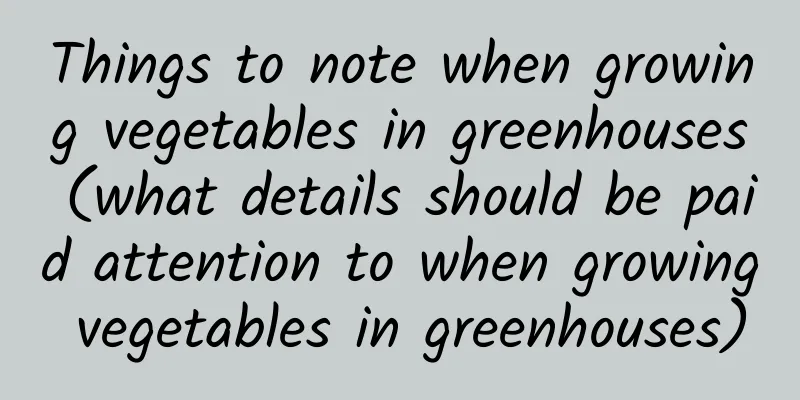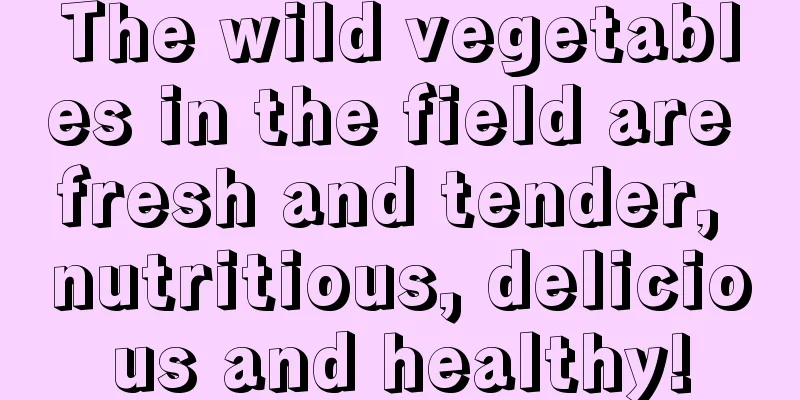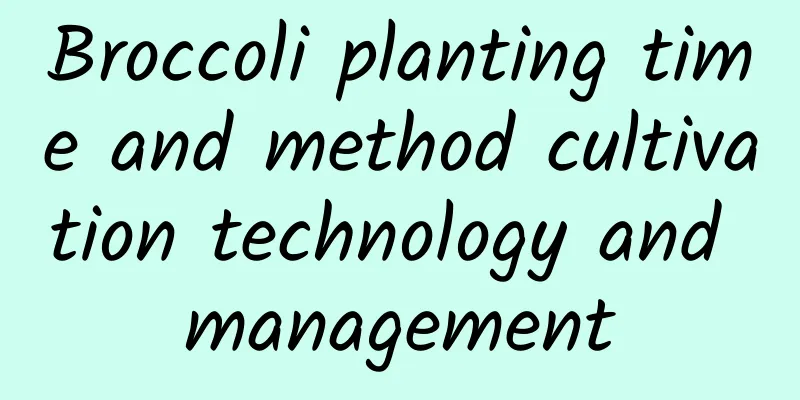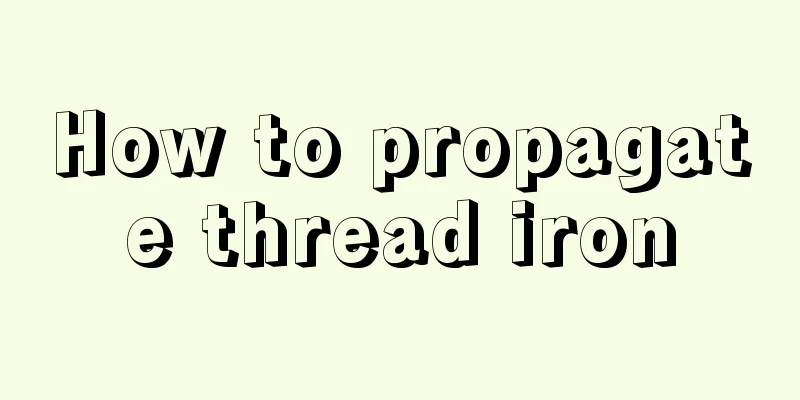Things to note when growing vegetables in greenhouses (what details should be paid attention to when growing vegetables in greenhouses)

Myth 1: If the plant grows vigorously, it will grow wellMany friends think that a vigorous plant is a good thing. In fact, with more water and more leaves, the roots are relatively shallow, the nutrition is not comprehensive, and the yield is reduced. Correct approach:When the vegetables are small, the root depth of weak plants should be controlled, and the amount of water and the root growth rate should be controlled. Myth 2 : More fertilizer, more yieldMany greenhouse growers will apply a lot of fertilizer to the vegetable fields in order to achieve high yields. However, excessive fertilization can easily lead to fertilizer damage. Correct approach:1. For greenhouses that have been growing vegetables for more than 3 years, the amount of cow dung and chicken dung per acre should be controlled at about 2,500 kilograms and not more than 2,500 kilograms, and the use of chemical fertilizers should be reduced to about 50%. 2. If the salt concentration in the land is high, be sure to spread some cow dung, EM fertilizer and humic acid fertilizer. This can increase the carbon-nitrogen ratio of the soil. The soil should be loose and breathable to solve the problem of salt and fertilizer damage. 3. Supplement magnesium fertilizer, zinc and boron to balance the nutrition of the soil, reduce input and create favorable conditions for our continued high yield. Myth 3 : More seedlings, more yieldMany farmers like to keep more seedlings, thinking that this will increase the yield. In fact, because the temperature is relatively low in winter, the sunlight is relatively weak, photosynthesis is poor, and carbohydrate synthesis is even less, it will not increase the yield. Correct approach:Vegetables that overwinter should be planted more sparsely; make full use of space and plant them denser in the early stage, adjust the plant spacing in the middle, and adjust the branch management methods in the later stage to ensure that the leaves are not too crowded. Myth 4: The more you apply pesticides, the fewer pests and diseases you will have.Many friends apply pesticides every 2-3 days during the growth period of vegetables, thinking that more frequent application of pesticides can prevent the occurrence of diseases and pests. WorkaroundBe sure to spray the pesticide according to the symptoms. We generally choose zinc and copper containing agents, which can kill bacteria, enhance the ability of vegetables to resist the invasion of diseases and pests, and promote plant growth. Secondly, we can improve the ecological environment in the greenhouse. If the ventilation is poor and the branches and leaves are lush, spraying pesticides every day may not have any effect. We should thin out the leaves to lower the temperature. Myth 5: Planting more crops is more cost-effectiveSome farmer friends think that since we have invested in building a greenhouse, we cannot leave it idle, so the more crops we plant, the worse the results will be and the lower the benefits will be. The right approachIt is best to plant one crop a year, and it can be planted twice a year, once in spring and once in autumn. For example, eggplant, pepper, tomato and cucumber can be harvested again after the old plants regenerate. When the price of vegetables is low, we can pull up the seedlings and dry them in the ground. You can take some time in the summer every year to deep plow the soil, let the rain press out the salt, kill the bacteria with exposure to the sun, mature the soil, and kill insects in the greenhouse. Myth 6 : High temperature, fast growthVegetables grown in greenhouses have an upper limit on the temperature they need, and the temperature in greenhouses is generally between 25 and 32 degrees Celsius. If the temperature is too high, the respiration of the seedlings will increase, the physiological activities and body operation will be disordered, the vegetables will grow too long, and their nutrition and reproductive growth will not be balanced. Therefore, the yield will definitely decrease. The right approachSet up two vents in the greenhouse, about two or three will do, and lower the temperature in time. Manage the temperature and humidity required by the growth period of vegetables, so as to prevent high temperature from growing vines but not fruits. |
<<: When is the best time to plant onions (how to plant onions for high yield)
>>: How to manage celery for high yield (planting density and yield of open-field celery)
Recommend
Cutting propagation method of musk lily
Cutting propagation time of musk lily Musk lily c...
How to plant chives in all seasons and when is the best season to plant them?
Suitable planting time for all-season chives Four...
How to cultivate Takasago no Ogi
1. Maintenance methods 1. Temperature: Takasago n...
How often should you water your green ivy and spray water on its leaves?
1. How often should you water? When growing plant...
Water and fertilizer management of Tradescantia
Water Management for Tradescantia Tradescantia li...
Transplanting methods and precautions for osmanthus
Transplanting time When transplanting osmanthus, ...
When does Lithops bloom?
How long does it take for it to bloom? Generally,...
Is it profitable to grow Ganoderma lucidum? Profits and prospects of growing Ganoderma lucidum
Can you make money by growing Ganoderma lucidum? ...
When to plant potted calla lily? What kind of soil is best for growing calla lily?
1. Planting time of potted calla lily Calla lily ...
Cultivation methods and precautions of bitter cherry
1. Soil It is generally best to prepare the soil ...
Can Daphne koreana be placed indoors?
1. Can it be placed indoors? The plant Daphne odo...
Beautiful pictures of chrysanthemums
The grandeur of chrysanthemums is something that ...
Top Ten Precious Clivia Rankings
1. Clivia miniata The leaves of Clivia miniata ar...
How to plant Prunus mume in the garden
Planting method Before planting wheat plum, the s...
How to raise silkworms to achieve high yield?
With the increase in market demand for silk , imp...









